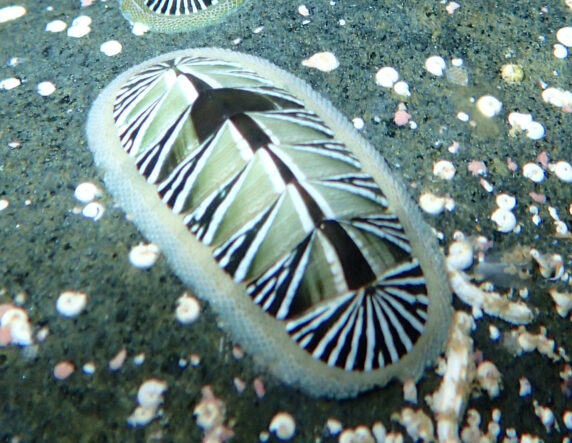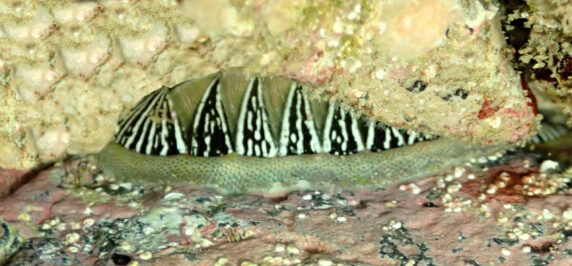White-striped Chiton, Chiton albiolineatus
 White-striped Chiton, Chiton albiolineatus. Size: 2.5 cm (1.0 inch). Underwater photograph courtesy of Ron Woheau, Zihuatanejo, Guerrero, January 2019.
White-striped Chiton, Chiton albiolineatus. Size: 2.5 cm (1.0 inch). Underwater photograph courtesy of Ron Woheau, Zihuatanejo, Guerrero, January 2019.
 White-striped Chiton, Chiton albiolineatus. Size: 2.5 cm (1.0 inch). Underwater photograph and identification courtesy of Ron Woheau, Zihuatanejo, Guerrero, January 2020.
White-striped Chiton, Chiton albiolineatus. Size: 2.5 cm (1.0 inch). Underwater photograph and identification courtesy of Ron Woheau, Zihuatanejo, Guerrero, January 2020.
The White-striped Chiton, Chiton albolineatus (Broderip and G.B. Sowerby I, 1829) is a member of Chitonidae Family of Chitons that has six hundred seventy-nine global species placed into twenty-nine different genera.
The White-striped Chiton has an elongated shell that has equally rounded ends and fairly straight sides. They are somewhat flattened with smooth plates. The radial areas are black with striking, white, radial lines. The central area of the shell may be violet gray, violet brown or greenish, with a lengthwise, black, center line. The girdle is gray to greenish, with white to light bluish-gray scales. The scales have brown borders. These shells reach a maximum of 4.0 cm (1.6 inches) in length.
White-striped Chiton is found intertidally, on, and under, rocks and stones. They are a poorly studied species and very little is known about their behavioral patterns.
The White-striped Chiton is a resident of the Pacific Ocean but has a limited distribution being found from Todos Santos, Baja California Sur, along the southwest coast of Baja and southward along the coast of the mainland to Guatemala. They are found in the Sea of Cortez only between La Paz and Cabo San Lucas, Baja California Sur.
Although very colorful, they are of limited interest to most. While these shells are fairly large, their foot is too small to be harvested as a food source.